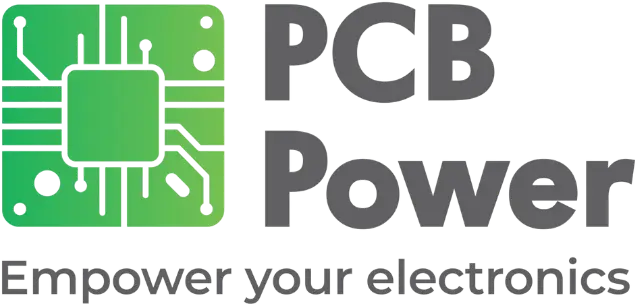
Comprehensive Guide to QFN Package & it’s Integration in PCB Assembly
When it comes to PCB assembly and design, choosing the right packaging for integrated circuits (ICs) is of utmost importance. Amidst the wide range of choices, the Quad Flat No-leads (QFN) package is notable for its small size, impressive thermal capabilities, and simple assembly process.
This blog provides a comprehensive overview of QFN packages, including their structure, advantages, applications, and assembly considerations.
What is QFN Package?
QFN is also known as Quad Flat No-Lead package, which is an IC package with surface-mounted features. The compact size, impeccable thermal and electrical performance, and easier manufacturing make them widely used components in small-sized advanced electronic gadgets.
Structure and Design of QFN Package
The QFN package stands out with its sleek and modern design, featuring a flat surface and leads that gracefully extend from the sides. This innovative approach makes it far advantageous from traditional packages in PCB assembly, where leads are typically found underneath the device.
This product is designed to focus on durability and dependability, incorporating a lead frame, die pad, and encapsulation material.
The lack of leads beneath the package enhances its compactness and facilitates improved thermal dissipation.
Benefits of QFN Package
Compact Size: In PCB assembly, QFN packages provide a high component density, making them perfect for applications that require efficient use of space.
Optimized Thermal Performance: The thermal pad on the bottom of the package helps to effectively dissipate heat, ensuring that the IC stays cool and avoids overheating.
Enhanced Electrical Performance: The use of shorter lead lengths and reduced inductance results in improved electrical characteristics, including lower impedance and enhanced signal integrity.
Efficient Assembly: QFN packages are compatible with surface mount technology (SMT), allowing for automated PCB assembly processes and lowering manufacturing costs.
Application of QFN Package
QFN packages are highly valued in a range of industries because of the many advantages they offer. There are various applications that are commonly used.
Consumer Electronics: QFN packages are smaller in size and have strong performance and, therefore, are the perfect fit for commonly used small electronic gadgets like smartphones, tablets, and wearables.
Automotive Electronics: QFN packages are ideal for automotive applications that require the utmost reliability, efficient thermal management, and compact design.
Industrial Control Systems: QFN packages are commonly used in industrial control systems due to their durability and ability to withstand harsh operating conditions.
Telecommunications: QFN packages are essential in telecommunications equipment, as they enable fast data transmission and dependable connectivity.
Important Factors to Consider During Assembly
QFN packages are very compact in size, and therefore, it is essential to consider every minute detail. Despite offering numerous benefits, QFN packages also pose certain challenges that designers and manufacturers must address. Below are some noteworthy points to consider while designing and manufacturing QFN packages.
Solder joint reliability: A typical worry is the possibility of solder junction reliability problems, especially when subjected to mechanical stress and heat cycling. To reduce the likelihood of these problems, it is crucial to use suitable reflow profiles, optimize the stencil design, and ensure sufficient solder paste deposition. To avoid overheating and guarantee the best performance from QFN-based systems, it is essential to use effective thermal management and PCB architecture.
Expertise in PCB Design: Having a well-designed printed circuit board layout is crucial for achieving a successful QFN package assembly. Important factors to consider are thermal management, signal integrity, and manufacturability. Strategically placing thermal vias and copper planes can effectively enhance thermal dissipation and prevent the QFN package from overheating.
Mastering the Soldering Technique: Reflow soldering is widely recognized as the most effective technique for QFN package assembly, guaranteeing accurate solder joint formation and excellent thermal performance. It is crucial to ensure precise alignment of the PCB board and solder paste deposition in order to avoid solder bridging and ensure satisfactory solder fillets.
Inspection and Quality Control: Inspection techniques like automated optical inspection (AOI) and X-ray inspection are widely utilized to ensure the quality of solder joints and identify any potential defects, such as voids or misalignments. There must be stringent quality control measures throughout the PCB assembly process to ensure the reliability and functionality of QFN-packaged devices.
Heat Dissipation Requirements: The exposed pad of the QFN package needs adequate thermal management on the printed circuit board. This might involve using thermal vias or heat sinks to efficiently dissipate heat away from the IC.
Ultimately, the QFN package presents a compelling blend of compactness, thermal performance, and cost-effectiveness, which makes it a highly appealing option for a diverse array of applications. Having a comprehensive understanding of the structure, advantages, applications, and assembly considerations of QFN packages enables PCB board designers and engineers to fully utilize their potential in creating innovative and reliable electronic products. By implementing meticulous design, assembly, and quality control measures, QFN packages have the potential to revolutionize PCB assembly design and manufacturing, leading to significant progress in a wide range of industries.



